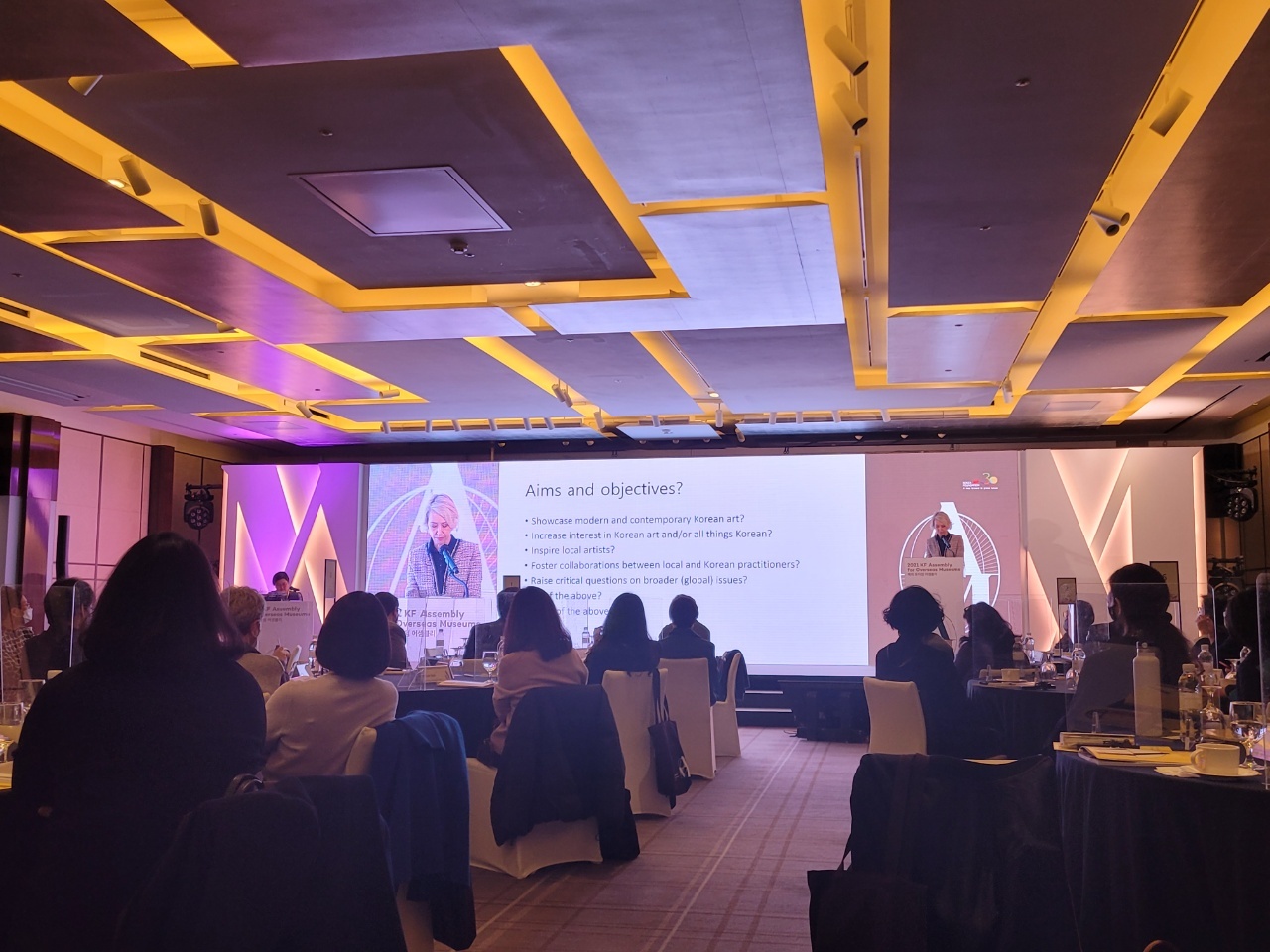Korean art expands global footprint in foreign museums
Art experts say traditional, modern Korean art out of reach due to scarcity, budget constraints
By Park YunaPublished : Nov. 15, 2021 - 18:38

Some 25 curators and directors from overseas museums discussed how Korean art has expanded globally and how their collections were built over time at the 2021 KF Assembly for Overseas Museums on Thursday.
“Contemporary Korean art has been exhibited outside Korea for decades, since the late 1950s,” said Charlotte Horlyck, lecturer in Korean art history at SOAS University of London. “Modern contemporary art from Korea continues to be strong, with some focusing on what we could call craft such as ceramics or sculptures while others take strong interest in paintings.”
Horlyck showed an image of the powerful and lively horse painting by Kim Ki-chang (1914-2001), which was exhibited at the World House Gallery in New York in 1958, during her presentation. She also highlighted “minjung” art that arose during the authoritarian regime in the 1980s and “dansaekhwa” art that now leads the Korean art market as other Korean genres that were internationally recognized.
Virginia Moon, associate curator at the Los Angeles County Museum of Art, said the museum’s collection of Korean art “grew slowly but meaningfully” over the past 30 years. The museum began collecting Korean art in 1966 when then-President Park Chung-hee and his wife, Yook Young-soo, donated 23 ceramics works, including Goryeo celadons (918-1392) and Buncheong ceramics from the Joseon era (1392-1897).
As the museum with the largest Korean art gallery in the US, LACMA is planning to host a joint exhibition with the National Museum of Modern and Contemporary Art, Korea titled “The Space Between: The Modern in Korean Art” that will offer a critical glimpse into Korea’s early contemporary art, covering the years from 1897 to 1965.
The show -- which is slated to open Sept.11, 2022 at LACMA -- will also feature “22 never-before-seen oil paintings” from the Lee Kun-hee collection donated to the MMCA.
Overseas museums are also making efforts to introduce Korean artists globally. LACMA, the Hood Museum of Art in New Hampshire and Charles B. Wang Center announced plans to host exhibitions of Korean ink wash painting artist Park Dae-sung starting next year.
Curators also shared their experiences in collecting Korean artworks. Sooa McCormick, curator of Koran Art at the Cleveland Museum of Art, said the collection was built through a three-stage acquisition process and persuasion is critical throughout.
Many curators agreed that both traditional and modern art from Korea are more difficult to collect compared to contemporary art, which are relatively easy to acquire as long as their budget allows it.
“When it comes to modern and traditional art, there are no artworks (available). Even when we find one, it is so expensive that we can’t afford it. We can’t even touch it (because it is too expensive),” said Moon of LACMA, urging the Cultural Heritage Administration to cooperate on sharing traditional artworks.
Thursday’s event, organized by the Korea Foundation, was attended by 25 directors and curators from overseas and 30 directors and curators from art museums in South Korea, including the National Museum of Modern and Contemporary Art, Korea, the National Museum, Leeum Museum of Art and Nam June Paik Art Center.
The event was held as part of a celebration to mark KF’s 30th anniversary. Korea Foundation has established Korean galleries at 28 museums in 10 countries and has conducted 172 projects with 94 museums, according to the public diplomacy institution. It has also supported 645 Korean art professionals in building their careers at overseas museums through various projects.
By Park Yuna (yunapark@heraldcorp.com)






![[From the Scene] Monks, Buddhists hail return of remains of Buddhas](http://res.heraldm.com/phpwas/restmb_idxmake.php?idx=644&simg=/content/image/2024/04/19/20240419050617_0.jpg&u=20240419175937)




![[Graphic News] French bulldog most popular breed in US, Maltese most popular in Korea](http://res.heraldm.com/phpwas/restmb_idxmake.php?idx=644&simg=/content/image/2024/04/18/20240418050864_0.gif&u=)




![[From the Scene] Monks, Buddhists hail return of remains of Buddhas](http://res.heraldm.com/phpwas/restmb_idxmake.php?idx=652&simg=/content/image/2024/04/19/20240419050617_0.jpg&u=20240419175937)

![[KH Explains] Hyundai's full hybrid edge to pay off amid slow transition to pure EVs](http://res.heraldm.com/phpwas/restmb_idxmake.php?idx=652&simg=/content/image/2024/04/18/20240418050645_0.jpg&u=20240419100350)

![[Today’s K-pop] Illit drops debut single remix](http://res.heraldm.com/phpwas/restmb_idxmake.php?idx=642&simg=/content/image/2024/04/19/20240419050612_0.jpg&u=)